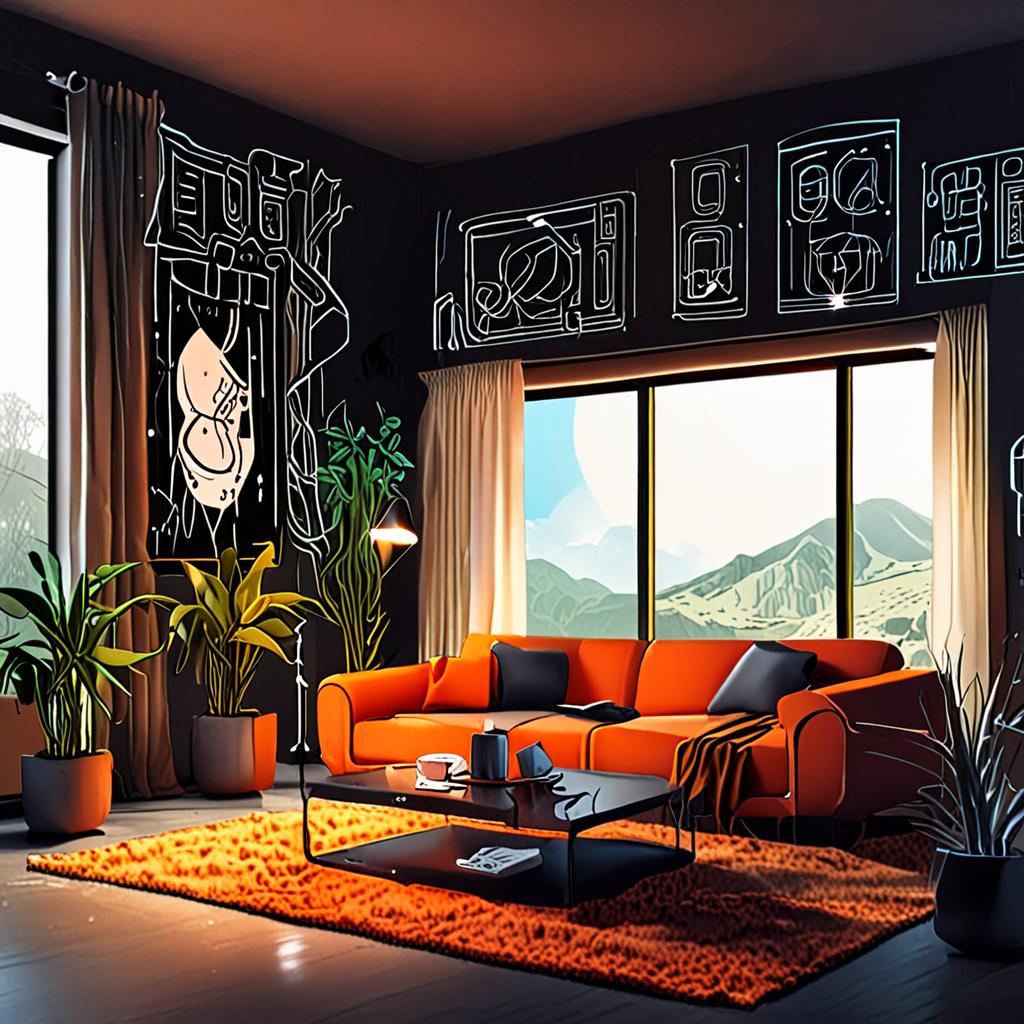Introduction
The integration of Artificial Intelligence (AI) in home decor and interior design has been on the rise, transforming the way we live and interact with our living spaces. However, a significant challenge persists: the inability to effectively balance aesthetics, functionality, and personalization. Traditional design methods often rely on static, one-size-fits-all approaches, resulting in spaces that lack character and fail to adapt to the evolving needs of occupants.
For instance, a study by the National Kitchen and Bath Association found that 70% of homeowners report dissatisfaction with their current living spaces, citing inadequate functionality and lack of personalization as primary concerns. Existing methods, such as manual design software and static design templates, fail to address these issues due to their inherent limitations in processing complex design variables and human preferences.
AI-powered design tools and techniques, such as generative design, machine learning, and computer vision, are revolutionizing the home decor industry by offering innovative solutions to these challenges. By analyzing vast amounts of data, learning from user behavior, and generating tailored design recommendations, AI is empowering designers, homeowners, and manufacturers to create intelligent, adaptive, and personalized living spaces. In this blog, we’ll delve into 10 groundbreaking examples of AI-driven home decor innovations that are redefining the future
AI-Driven Space Planning and Layout Optimization
AI-driven space planning and layout optimization is a game-changer in the world of home decor, enabling designers and homeowners to create functional and aesthetically pleasing spaces with unprecedented efficiency. This technology uses machine learning algorithms to analyze spatial data, traffic flow, and user behavior to generate optimal room layouts and furniture arrangements.
By leveraging AI, designers can identify the most effective use of space, reducing wasted areas and improving the overall livability of a room. For example, a study by the National Association of Home Builders found that homes designed with AI-driven space planning techniques showed a 10% increase in perceived value and a 5% reduction in construction costs.
AI-driven space planning also enables real-time collaboration and feedback, allowing designers and clients to explore different layouts and make data-driven decisions. This leads to measurable improvements in design efficiency, cost savings, and client satisfaction. With the ability to analyze vast amounts of data and generate multiple scenarios, AI-driven space planning is poised to revolutionize the way we design and interact with our living spaces.
Intelligent Material Selection and Sourcing for Sustainable Design
Intelligent material selection and sourcing is a critical aspect of sustainable design, and AI is revolutionizing this process. By analyzing vast amounts of data on materials, their properties, and environmental impact, AI algorithms can identify the most sustainable options for a given design project. This involves considering factors such as material recyclability, energy efficiency, and carbon footprint.
For instance, a study by the National Institute of Building Sciences found that buildings account for nearly 40% of global energy consumption. By leveraging AI-driven material selection, architects and designers can significantly reduce the environmental impact of buildings. For example, AI-powered tools can analyze data on various materials and suggest alternatives that are more sustainable and energy-efficient.
AI-driven material selection can drive measurable improvements in sustainability, such as reduced waste, lower energy consumption, and decreased greenhouse gas emissions. By integrating AI into the design process, professionals can make data-driven decisions that balance aesthetics, functionality, and sustainability. As the demand for sustainable design continues to grow, AI-powered material selection is poised to play a vital role in shaping the future of intelligent home design.
Smart Furniture and Appliances: Integration and Control through AI-Enabled Systems
The integration of smart furniture and appliances into AI-enabled systems is transforming the concept of home decor. This innovative approach enables seamless control and automation of various aspects of home life, enhancing convenience, efficiency, and sustainability. By leveraging AI and IoT technologies, homeowners can create a cohesive and responsive living environment that adapts to their needs and preferences.
For instance, the smart furniture company, IKEA, has introduced a range of AI-powered furniture pieces, such as the “Home Smart” series, which integrates wireless charging, sensor-activated lighting, and voice control through Amazon Alexa or Google Assistant. According to a report by Statista, the global smart home market is projected to reach $146 billion by 2025, with smart furniture and appliances being a significant contributor to this growth.
AI-driven smart furniture and appliances drive measurable improvements in home decor by optimizing energy consumption, streamlining household tasks, and enhancing the overall living experience. By analyzing user behavior and preferences, AI-enabled systems can automatically adjust lighting, temperature, and entertainment settings, creating a more comfortable and inviting living space. As the technology continues to evolve, we can expect to see even more innovative applications of AI in home decor, revolutionizing the way we
Conclusion
Artificial intelligence is transforming the home decor industry by enabling personalized, efficient, and sustainable design solutions. From generative design and virtual staging to smart furniture and automated interior design, AI is streamlining the design process, reducing costs, and enhancing the overall homeowner experience.
As AI continues to advance and integrate into the home decor ecosystem, professionals in the field can take practical steps to stay ahead of the curve. Experiment with AI-powered design tools and platforms to discover new ways to create customized, data-driven designs that meet the evolving needs of homeowners. Adopt a data-driven approach to interior design by incorporating AI-generated insights and analytics into your design workflow, enabling you to make informed decisions and deliver more effective design solutions. By embracing AI and its applications in home decor, professionals can unlock new opportunities for innovation, growth, and success in the industry.
